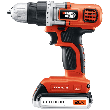Window planters can be an attractive and picturesque addition to any home. Fortunately, this is a home improvement project that anyone can undertake. All you need to do is have the time, and a few simple items, and you are soon going to have an attractive and durable addition for your home planting needs.
Materials and tools needed:
- Safety goggles
- Paint brushes
- Exterior
- Clamps
- Tape measure
- Drill (with bits)
- Table or circular saw
- Wood buttons (optional)
- Wood 6'x1"x"8 (choose to taste)
- Wood 4'x1"x8" (choose to taste)
- 14 1 1/2" galvanized wood screws
- 10 2 1/2" galvanized wood screws
- Hearing protection
Once you have gathered your materials and tools into one location, you are ready to begin. Simply select a day that you can devote plenty of time to your project, as it is always better to finish a project once you have started as opposed to only doing half, and hoping to be able to get to it later.
- Measure. Start by measuring the window that your planter is going to be placed in or near. You need to have this information, for multiple reasons that include centering your boxes, as well as affecting the overall size of your planters. The planters described here are for standard sized windows.
- Plan. Once you have gotten the measurements, try drawing out a little blue print with the measurements listed clearly. This is going to give you a finalized picture of what your project should look like, not to mention it is going to also help you visualize where everything should go in relation to each other.
- Select wood. Decide on what type of wood you want. There are multitudes of woods to choose from, each of which has its own unique look and feel. Each different wood is going to wear differently over the years, not to mention is going to provide a different look to your home. Use only the wood that you think is going to match with your taste.
- Cut. Following the overall plans that you designed earlier, you need to cut the pieces of your wood. For the front and back of a fairly basic planter, cut two 30" pieces of wood from the 6' board. To make the bottom of your planter, take your 4' board and cut another 30" piece of wood. To make the sides, cut two pieces of wood that measure 6 3/8" tall and 5 7/8" wide. If you would like, you can make the bottom a little narrower to provide some interesting dimensions, just be sure that you cut both sides to the same specifications.
- Assemble. Prior to actually putting things together, lay everything out in a rough form of what it is going to look like in the final stages. This is to ensure that everything is going to be fitting together as it should. Use your drill and make some "countersink" holes through the different pieces of wood. You should probably have three along the front and back, evenly spaced, and four on each of the sides. Using the glue and clamps put everything together, and then place a 1 1/2" screw in each of the countersink holes to help hold everything together. At this time, you are going to want to make several holes, evenly spaced, throughout the bottom of the box to ensure that there is proper drainage. Do not make the holes any larger than 1/8" in diameter.
- Paint/Stain/Seal. Once everything has been assembled, and the glue has dried it is time to paint, stain, or seal the planter. Whichever you decide to do, you should make sure that you allow each coat to properly dry before applying the next.
- Mount. The final step is to mount the box. You should have a little bit of wood left over from the construction of the box. Using this wood you are going to make a couple of strips that measure 1"x2". These strips are going to be the mounting anchor for your planters, as well as providing space for breathing between the planters and the walls of your house. Align these strips with the back pieces of your window box, and evenly space and drill some pilot holes. Center the alignment of your box with the window, and then secure the box to the window with your 2 ˝" screws.
Author Bio
Lee Wyatt
Contributor of numerous Tips.Net articles, Lee Wyatt is quickly becoming a regular "Jack of all trades." He is currently an independent contractor specializing in writing and editing. Contact him today for all of your writing and editing needs! Click here to contact. Learn more about Lee...
Cleaning Track Lighting Fixtures
Track lighting is a trendy, modern way of delivering light exactly where you want it, when you want it there. However, ...
Discover More
French Press Coffee Maker
There are all kinds of different ways may have heard about French Press coffee makers. Maybe you heard about them from ...
Discover More
Understanding Veteran's Benefits
Understanding the benefits that a veteran receives can be a tad difficult. In fact, there are whole branches of the ...
Discover More
More Home Improvement Tips
Cabinet, Counters, and Storage Tool Kit
Some of the more important parts of the home are things like cabinets, counters and other types of storage spaces. As ...
Discover More
Building a Sandbox
A sandbox is a perennial favorite among children, so why not give one to a child that you know. Building a sandbox is ...
Discover More
Building a Slide
There are few things in the world that seem to bring joy to children as much as a playground and one of the perennial ...
Discover More

Comments